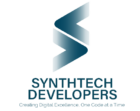Driving conversions is a crucial aspect of any successful website, and one of the most powerful tools in your arsenal is the use of well-designed call-to-action (CTA) elements. A call-to-action is a prompt on your website that encourages users to take a specific action. It could be a “Sign Up” button, a “Download Now” link, or even a “Learn More” option that directs users to explore your content further. When designed effectively, CTAs can significantly boost conversion rates, improve user engagement, and contribute to the overall success of your online presence.
At SynthTech Developers, we pride ourselves on delivering educational and informative content tailored to the needs of our clients. In this article, we’ll outline the essential principles of effective CTA design to help you maximize conversions and enhance the performance of your website.
1. Use Action-Oriented Language
Compelling language is vital to inspire users to take action. Your CTAs should clearly communicate the desired outcome with concise, powerful, and active language. Use verbs that clearly indicate the action you want users to take, such as “Download,” “Sign Up,” or “Get Started.” By doing so, you can set expectations and guide users seamlessly through the conversion process.
Additionally, consider personalizing your CTA language by using words like “You” or “Your,” making users feel like the message is crafted specifically for them. This personalized touch can result in heightened engagement and more successful conversions.
2. Make CTAs Stand Out Visually
To capture users’ attention and guide them towards taking action, your CTAs must stand out visually from the rest of your website. The key to achieving this is by designing CTAs with a distinctive appearance, utilizing contrasting colors, and employing prominent placement within your website layout.
Utilize a color that contrasts with the background, making your CTA easily visible and eye-catching. Additionally, consider placing CTAs strategically within your site to naturally flow within users’ browsing experience. Prominent placement, such as above the fold or at the end of content or articles, can lead to higher engagement and conversion rates.
3. Prioritize Clarity and Simplicity
Ensuring that your CTA is easily identifiable and simple to understand is crucial for a frictionless user experience. A cluttered or overly complex CTA design can act as a barrier to conversion, discouraging users from taking action.
To maintain clarity and simplicity, keep your CTA text concise and relevant to the desired action. Utilize whitespace around the CTA to emphasize its importance and minimize other elements sharing close proximity, preventing visual confusion. By designing your CTAs with a focus on clarity and simplicity, users can effortlessly identify and interact with your prompts, ultimately driving higher conversion rates.
4. Encourage Urgency
Inspiring a sense of urgency within your CTA can encourage users to act immediately, rather than waiting or potentially forgetting to interact later. This urgency can be expressed through language, time-sensitive promotions, or by illustrating the limited availability of your offering.
Incorporate words like “Limited Time,” “Today Only,” or “Now” to emphasize the need for immediate action. Additionally, consider using countdown timers, promotional discounts, or showcasing limited quantities in close proximity to your CTA. These techniques can create a sense of scarcity, urging users to swiftly engage and complete the desired action to avoid missing out.
5. Test and Optimize
Continuously analyzing and optimizing your CTAs is essential for maximizing their effectiveness and conversion rates. By engaging in regular testing and analyzing performance metrics, you can identify design opportunities and refine your strategies, ultimately improving overall website performance.
A/B testing, also known as split testing, can be a valuable tool for assessing the effectiveness of various CTA elements, including design, language, placement, and color. By implementing different CTA variants and monitoring their respective performance, you can identify the optimal combination for your specific audience and objectives.
Conclusion
The successful design and implementation of compelling call-to-action elements can significantly enhance user engagement and drive conversions on your website. By focusing on action-oriented language, visual prominence, clarity, urgency, and continuous optimization, you can create persuasive CTAs that resonate with your target audience and contribute to the overall success of your online platform.
Whether you’re preparing for a website redesign or launching a new project, the experts at SynthTech Developers are here to help. Our team of talented designers and developers specializes in creating stunning, high-converting websites tailored to your unique business objectives. Contact us today to request our web design services, and let’s work together to turn your website into a powerful conversion engine that propels your success to new heights.
